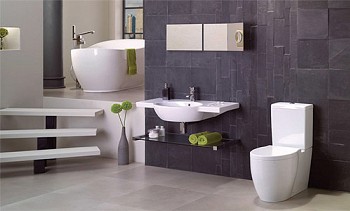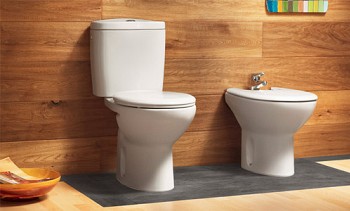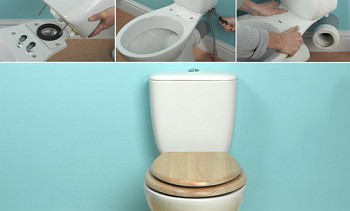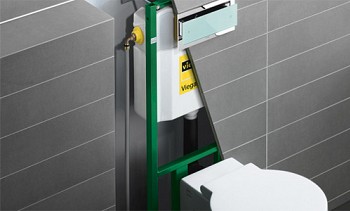For the first time, a toilet with a mechanical flush cistern was designed for the Queen of England in 1596. But the lack of a sewage system and water supply system prevented the device from spreading. The inventors returned to the development of these plumbing devices only a century and a half later, and the Englishman T. Twyford called one of his models, reminiscent of a modern compact, Unitas, which meant unity. Currently, the types of toilets are distinguished by the shape of the bowl, the installation method (floor and hanging), the type of drain design and the interface with the sewer. In addition, the device is released from various materials.
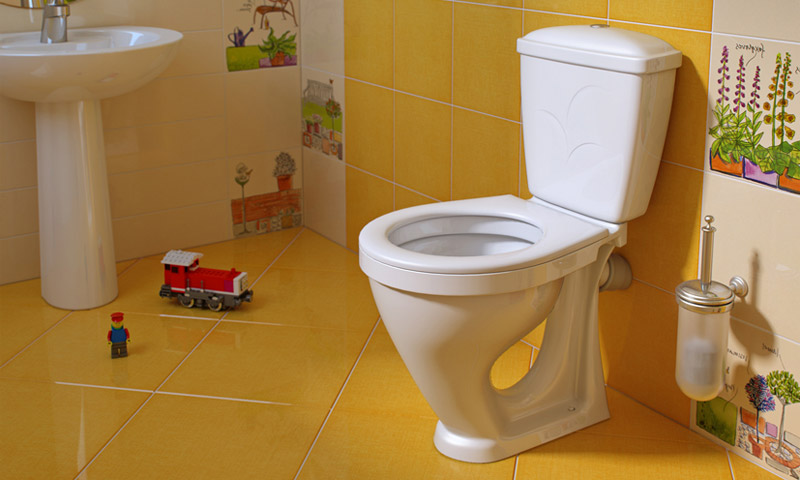
Content:
The following requirements of the state standard are presented to toilets:
- installation height - 400 mm;
- static load - 200 kg;
- the volume of water for draining is not less than 6 l;
- a list of parameters reflecting the effectiveness of cleaning when washing paper and dummy feces, the degree of rinsing of the bowl from the inside.
These parameters are required for all manufacturers. The choice of toilet depends on the convenience of the shape of the bowl, material, design and operating conditions.
Types of toilets in the bowl
The shape of the bowl must ensure comfort, hygiene and functionality. And although there are several basic geometric types, different manufacturers have slight differences that are not noticeable at first glance.
According to the design of the toilet bowl are:
Funnel-shaped

The design advantage is high hygiene due to the location of the funnel in the center of the bowl, which ensures thorough and instant removal of bowel movements. Disadvantages include the likelihood of a surge.
Dish-shaped

The design is a flat platform (shelf) for the accumulation of waste, which is cleaned only under the influence of a stream of water. Bowls of this type are considered obsolete, and although they exclude spatter, they are rarely produced today due to poor hygiene.
Visors

The most common form, the design of which includes a special protrusion that prevents the formation of a surge and slope provides the removal of defecation products from the walls of the device.
In addition to operational parameters, the shape of the bowl should provide a thorough flush, preventing the formation of salt deposits and water spray. These parameters are determined by the symbiosis of the design of the bowl and the type of flush.
Types of toilets by flushing
Toilets by the type of flushing, depending on the direction of water flows, produce a direct or cascade type and vice versa circular (shower type). Both designs have advantages and disadvantages.
Direct flush

Direct flushing is carried out by a stream of water on one side of the bowl. This design is durable, but does not provide high-quality washing of the entire surface. The advantage of the system is its relatively low cost. The main disadvantages in addition to the incomplete coverage of the bowl capacity are the presence of noise and splashing.
Circular flush

When organizing a system of circular flushing, water jets are directed at different angles to the inner surface of the bowl and move in different directions. This allows you to process up to 95% of the surface. In addition, the design has low noise.
In rare cases, manufacturers design a non-standard drain, which provides for the initial filling of the bowl with water and then a quick descent.This method completely flushes the internal perimeter of the toilet. The design flaws include water overruns, which can exceed 8 liters.
The average water consumption in the drain system according to the standard should be within 6 liters, but there are systems that use two modes - full and economical. In the second case, water consumption is reduced by 2 times.
Other toilet selection criteria depend on the installation conditions and the technical capabilities of the sewer systems. Regarding these parameters, there is also a certain gradation of types of these devices.
Types of toilets for release into the sewer system
By the type of release, the toilet bowls come with vertical, horizontal and oblique outlet. The choice of the necessary design depends directly on the location of the sewer inlet.
The horizontal and oblique outlet are distinguished by an angle of inclination, which for the first option is practically equal to 180 ° (parallel to the floor), and for the second 145 - 140 ° with respect to the sewer inlet. The use of this type of toilet has become widespread in recent decades, thanks to the laying of sewer communications in the plane of the ceilings, combined with a system of vertical risers. At the same time, the point of attachment of the toilet with an oblique outlet cannot be used to mount the device with a horizontal outlet without using an adapter system - special nozzles.

Oblique release
An oblique outlet was distributed during the installation of riser sewage systems in apartment buildings in the 70s - 80s of the last century.

Horizontal release
Modern domestic objects are designed for the use of horizontal toilets

Vertical release
In the buildings of the first half of the last century, the most common was the use of vertical release.
In the modern construction industry, the use of vertical outlets is common on both American continents, due to the principles of installation of communications, which are mounted without reference to the walls. This method allows you to install a plumbing unit at any point in the room, and hide the pipelines due to the facing materials of the floor and ceiling.
The material of the toilet
The first toilet, which was recognized by contemporaries and received a gold medal at the London exhibition in 1884, was made of earthenware and equipped with a wooden seat. Since then, the range of materials that are used to manufacture this sanitary ware has expanded significantly.
Faience
Earthenware toilets have low strength and relatively large porosity, which makes it difficult to clean and maintain the device. The use of the material in modern production conditions is limited, since the product is fragile and prone to the formation of chips and cracks. The developed technologies, although they can improve these characteristics, but in comparison with other materials used for the manufacture of toilets, faience is significantly inferior.
China
Compared to earthenware, porcelain compacts are durable, their surface is easy to clean, and their strength allows using not only in individual toilet rooms, but also in public places. The only but significant drawback of porcelain is the significant cost due to high production costs. To reduce costs, ceramic bowls have become widespread, which, unlike porcelain, have a lower degree of surface glaze, more weight and less strength.
Steel and cast iron
Plumbing made of metal (with the exception of gold) is a classic type and is installed in public toilets. Products have high strength and are easy to clean, but have a relatively high price.Cast iron toilets are the least popular due to their high weight and low enamel resistance to mechanical damage.

Pictured is a stainless steel toilet.
Glass, stone
Toilet bowls made of glass, artificial or natural stone belong to the products of the "modern" category. These plumbing fixtures are distinguished by their high price and sophisticated appearance. The lack of strength for glass and natural stone toilets is compensated for by the use of artificial substitutes, which are visually and tactilely inferior to their natural counterparts.
Plastic
Modern technologies allow the production of toilet bowls from reinforced acrylic. These products have high strength indicators, are easy to maintain and practically have no porous structure, which is the maximum indicator of hygiene. The disadvantages of plastic plumbing devices include exposure to deformations caused by mechanical stress or high temperatures.
Ways of fastening toilets
Depending on the installation method, the toilets are divided into hanging and flooring, while the flooring is divided into simple and installed close to the walls (wall).
Floor toilets
Floor toilets are distinguished by low cost, and ease of installation. Floor plumbing devices are recommended for installation in spacious toilet facilities. Installation is carried out on anchor bolts and takes a minimum of time. In addition, this design allows for dismantling without harm to the flooring. For installation in small toilet rooms, attached (wall) structures are used.

Wall-mounted toilets designed with a special flush system are not inferior in compactness to hanging models.

Among the floor toilets, a special-shaped toilet bowl can be distinguished, which can be installed in a corner. It is not only a designer find, but can also be a very practical solution in organizing a bathroom.
Wall hung toilets
The hanging toilet is designed for installation in small areas. The mounting system of these devices is designed for a load of 400 kg or more. The advantage is a more accessible space for sanitary cleaning, and the saved space allows you to equip a bidet in a small space.
The bowls are mounted above the floor surface and mounted in a block or frame way. The frame design provides a rigid fixation of the toilet to the wall and floor and is located inside the false wall. The necessary fittings and pipes are attached to the structure. In contrast to this method, block mounting involves mounting the frame to a load-bearing wall. Installation depth is 150 mm. Space saving is possible only if you use the existing "false" design or when special niches reinforced with metal beams are installed.

In the photo is a suspended toilet in a classic version.
Tank Mounting Options
There are several options for placing the drain tank, but depending on the interface with the toilet, there is a separate and joint type of construction.
Separate toilet and cistern
The tank is mounted under the ceiling and connected to the toilet with a plastic or metal pipe. The drain device is controlled by a lever that is extended by a flexible handle on a chain, rope or similar material. The design was developed over a century ago and, as an advantage, has a naturally high drain rate, which ensures high-quality work compared to other analogues.

Modern separate systems are mounted with a hidden tank, which in the open version does not have an aesthetic appearance, but there are also decorative options.
Joint toilet and cistern
Joint design (compact) involves mounting the tank directly to the toilet or on a monolithic shelf.This system is widespread, since it does not require additional installation work and involves less use of materials. In addition, the compact can be located regardless of the distance to the walls and the ability to use vertical surfaces as a supporting base.

The most common option for mounting a toilet bowl.
Monoblock toilet
This is a kind of toilet bowl combined with a tank, but at the same time the tank is not attached to the toilet with the help of balts and a rubber seal, but the whole block is cast at once.

This design is more reliable and hygienic, but it is more bulky.
Hidden tank
To carry out design decisions or to increase the space in the toilet room, modern drain tanks can be mounted in a hidden form using a false wall. The tank must be made of plastic, and the device is installed using the frame method. Buttons or control levers are brought to the surface using special mechanical extension cords, which are provided for by the design of the tank.

Most often, such a system is used when installing wall-mounted toilets.
Toilets without a tank
In modern plumbing equipment, especially for the installation of public toilet rooms, toilets with a drainage system directly from the pipeline are used. Water is supplied from the water supply and controlled by a mechanical or electronic valve.
Smart toilets
The development of technology has allowed toilet developers to add functionality that is implemented:
- In a built-in bidet or shower;
- Automatic drain system;
- Heated seat;
- Accompanied by music;
- In devices for monitoring the health of the human body, etc.

